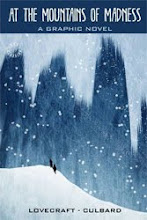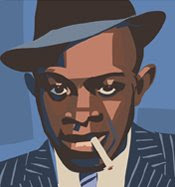 Let's not, eh. It would be a waste of comics, and there is much comics to be made and much comics to be read over the next 12 months. My schedule is filled with Don Quixote until May when I'll take on a few other smaller projects before tucking into Quixote Vol. 2. I also have another project on the go that I'm acting as editor on. It was 'just an idea' a month ago and had anyone said:
Let's not, eh. It would be a waste of comics, and there is much comics to be made and much comics to be read over the next 12 months. My schedule is filled with Don Quixote until May when I'll take on a few other smaller projects before tucking into Quixote Vol. 2. I also have another project on the go that I'm acting as editor on. It was 'just an idea' a month ago and had anyone said: that would have been the end of it. Someone didn't, in fact someone thought it was a good idea and now I'm committed to it. There will be announcement in a couple of months and you will all be duly excited. Unless you already know, in which case you'll probably say, "not that again...!"
that would have been the end of it. Someone didn't, in fact someone thought it was a good idea and now I'm committed to it. There will be announcement in a couple of months and you will all be duly excited. Unless you already know, in which case you'll probably say, "not that again...!"That's the book making side of things, there is also the book reading side of things:
 That's right, there will be books from me you can take home. There will be two books from SelfMadeHero that I've worked on out next year: Quixote Vol. 1 (of course) out in the Autumn and The Lovecraft Anthology, out in May, featuring The Dunwich Horror written by me and drawn by the irrepressible Ian Culbard.
That's right, there will be books from me you can take home. There will be two books from SelfMadeHero that I've worked on out next year: Quixote Vol. 1 (of course) out in the Autumn and The Lovecraft Anthology, out in May, featuring The Dunwich Horror written by me and drawn by the irrepressible Ian Culbard.  It certainly is a strange tale, but then that's Lovecraft for you, he was a strange chap. The ear in question belongs to our friend Alonso Quixana.
It certainly is a strange tale, but then that's Lovecraft for you, he was a strange chap. The ear in question belongs to our friend Alonso Quixana. All these illustrations, with the exception of Ian's, come from Don Quixote. The funny looking, green ones at the top are from the stories within stories that are a big feature of Quixote. No doubt I'll blog about that next year.
For now though I need to get my head down and draw. In that respect at least 2011 will be much the same as every other year.































 The A2 Doctor Who posters are £15, the A3 prints are all £10 plus P&P on both.
The A2 Doctor Who posters are £15, the A3 prints are all £10 plus P&P on both.



















![[huzzahnoir2.jpg]](https://blogger.googleusercontent.com/img/b/R29vZ2xl/AVvXsEhfLdDLBBPfTSXRPWrnWAtBD0aOZCN-zriqioFPJjPJkoxY_aiXqD070FccoLIdFOmwjNgUsYhjDfS9Rby_Ma7JXa-i5imDIl2Ytku1_gMjs3jRgRlOJMALTP_pDI6ovoek8_Uhz-zi7Eum/s1600/huzzahnoir2.jpg)